I remember standing at the foot of the Bavarian Alps, just staring up at Neuschwanstein Castle. It’s tucked away in southern Germany, and honestly, it’s every bit the fairytale castle I imagined. No wonder Disney took inspiration from it—it shot straight to the top of my travel bucket list.
Every day, thousands of people show up. If you want a smooth, memorable trip, you really need to know what you’re getting into.
Want to enjoy Neuschwanstein Castle without those massive crowds? Want to snap that perfect photo and skip the ticket stress? You’ll need a plan. Trust me, with a few booking tricks and knowing where to stand at Marienbrücke, you’ll save yourself a lot of hassle.
Visiting Neuschwanstein can be magical, but if you know what you’re doing, it feels a whole lot more special.

Essential Tips for Booking Neuschwanstein Castle Tickets
When I started planning my visit, I quickly realized that timing and picking the right ticket matters a lot. A bit of prep can save you from wasting time in lines or missing out on the best photo spots near Hohenschwangau.
Types of Tickets and How to Choose
Neuschwanstein Castle sells a few ticket types. Standard entrance tickets get you a guided or audio tour inside. If you want to see more, combination tickets cover Hohenschwangau Castle or the Museum of the Bavarian Kings, and you’ll probably save some cash if you’re up for a full day.
Families get discounted tickets for kids, and students should bring ID for youth prices. If you just want to wander the grounds and trails, you don’t need a ticket, but you do need one to go inside the castle. I always recommend the guided tour for first-timers—the guides really bring King Ludwig II’s wild dreams to life.
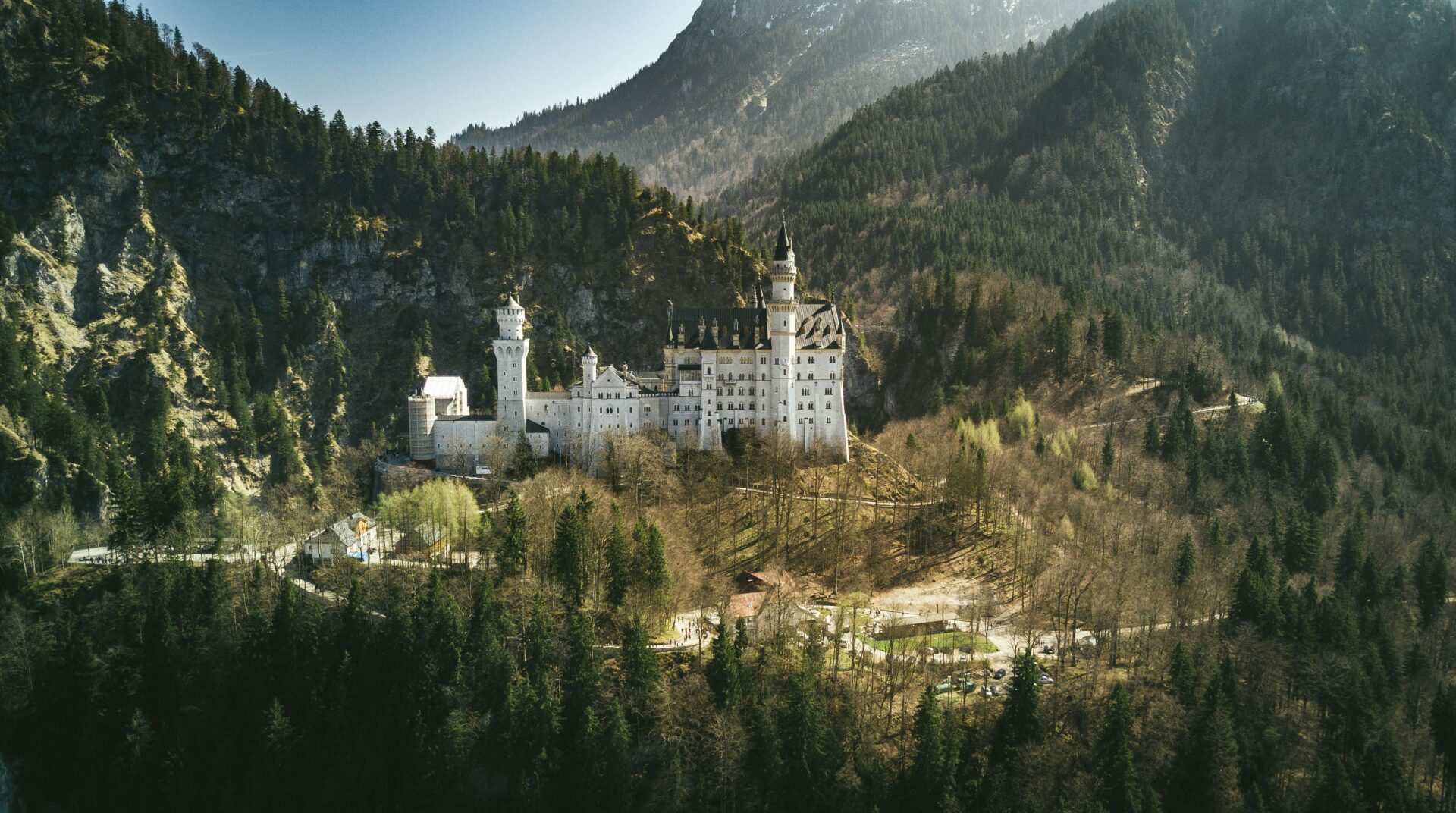
Booking Online vs. Onsite
I heard enough horror stories about people waiting hours at the Hohenschwangau ticket center, so I booked online. Booking tickets online is the only way I trust to actually get in, especially when it’s busy. During high season, tickets disappear well in advance, so I grab mine a few weeks before I go.
The official website is straightforward, but they tack on a small convenience fee (about €2.50) per ticket. You might find same-day tickets onsite, but honestly, they’re usually gone by late morning in summer. Online booking just feels less stressful—no rushing, no worrying about missing out.
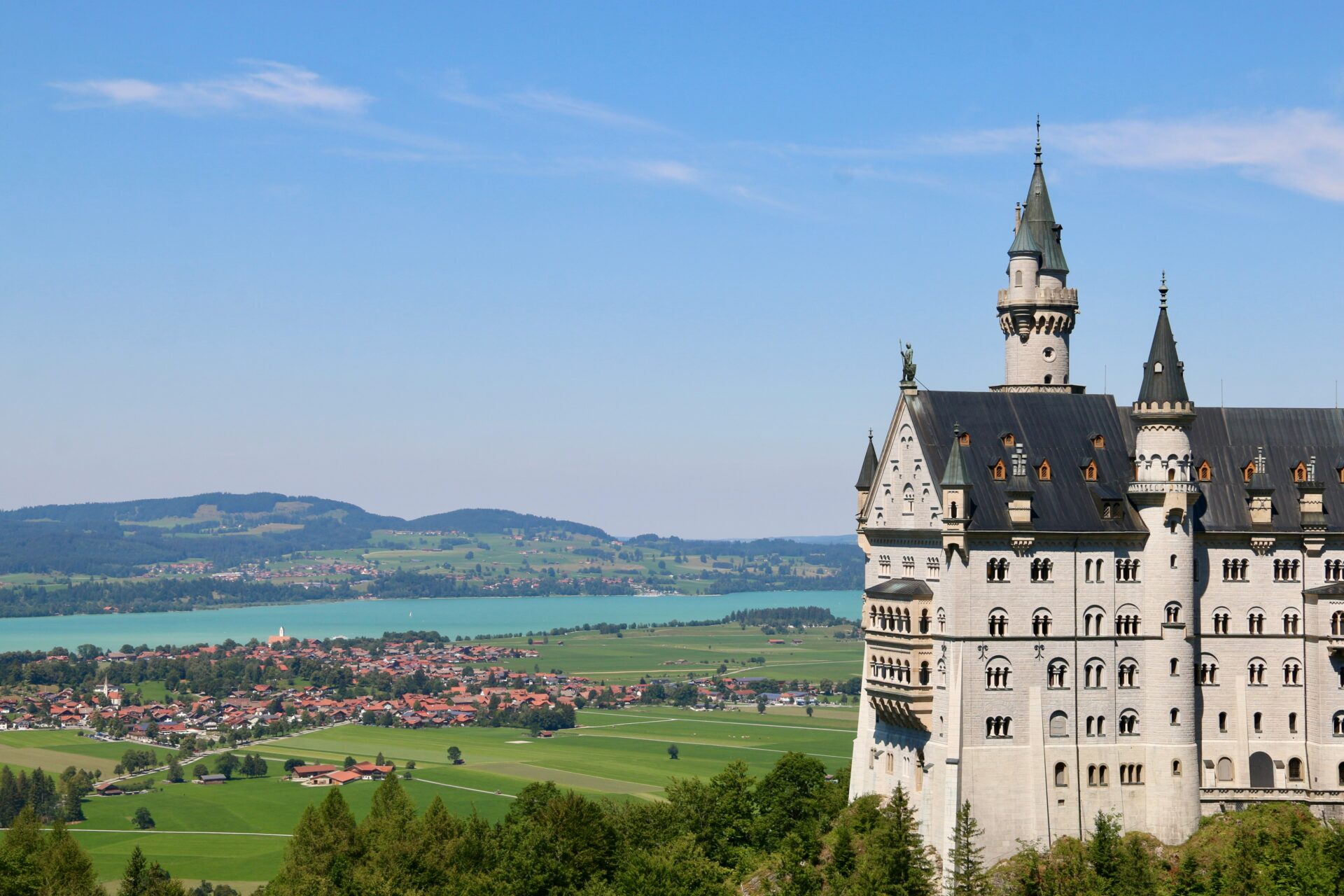
Availability and Timed Entry Advice
Neuschwanstein Castle uses timed-entry tickets. You only get in at your scheduled slot, and they’re strict about it. I always pick a tour early in the day if I can.
By late morning, the castle and its walkways fill up—especially when the tour buses show up. I make sure to get to Hohenschwangau at least an hour before my slot. That gives me time to grab my ticket, sip a coffee, and start the hike up.
If you miss your entry time, they won’t let you in—no exceptions. If you’re also checking out Hohenschwangau Castle or the Museum of the Bavarian Kings, plan your times so you’re not sprinting between tours.
Getting the timing right lets you slow down and actually enjoy the place. You’ll also catch the best light from Marienbrücke for photos. Booking early and leaving space between activities helped me actually relax and soak up the magic.
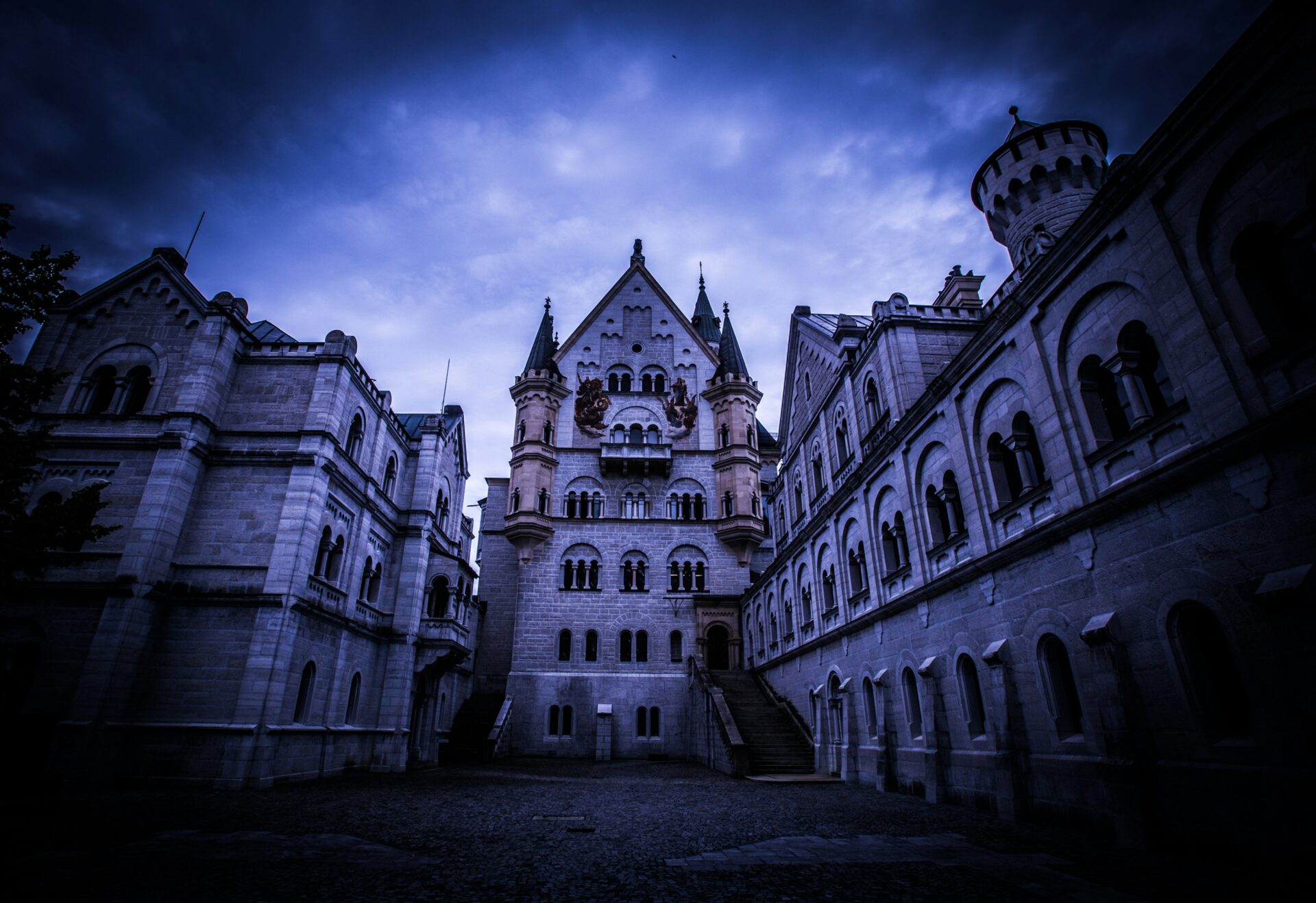
When to Visit: Best Times and Beating the Crowds
Timing matters a lot at Neuschwanstein Castle. If you want those jaw-dropping Bavarian Alps views, you have to pick your moment.
Best Times of Year and Weather Considerations
From what I’ve seen, July and August are packed. Sometimes it feels like everyone on earth shows up at once. Up to 8,000 tourists wander in daily, so lines get long and parking is a pain.
I prefer late spring or early fall. May, June, and September bring warmer weather and thinner crowds. The hills go wild with blooming flowers in May.
Early October is gorgeous too, with fall colors everywhere. If you’re okay with chilly air, winter can be magical—snow on the towers, the Alps all frosted. Some viewpoints and trails close when it snows or gets icy, though.
Here’s a quick rundown:
| Month | Weather | Crowds | Landscape |
|---|---|---|---|
| May-June | Mild, fresh | Fewer | Green, blooming |
| July-August | Warm, busy | Most crowded | Lush, vibrant |
| Sept-October | Cool, crisp | Fewer | Autumn colors |
| Winter | Cold, icy | Least | Snowy, picturesque |
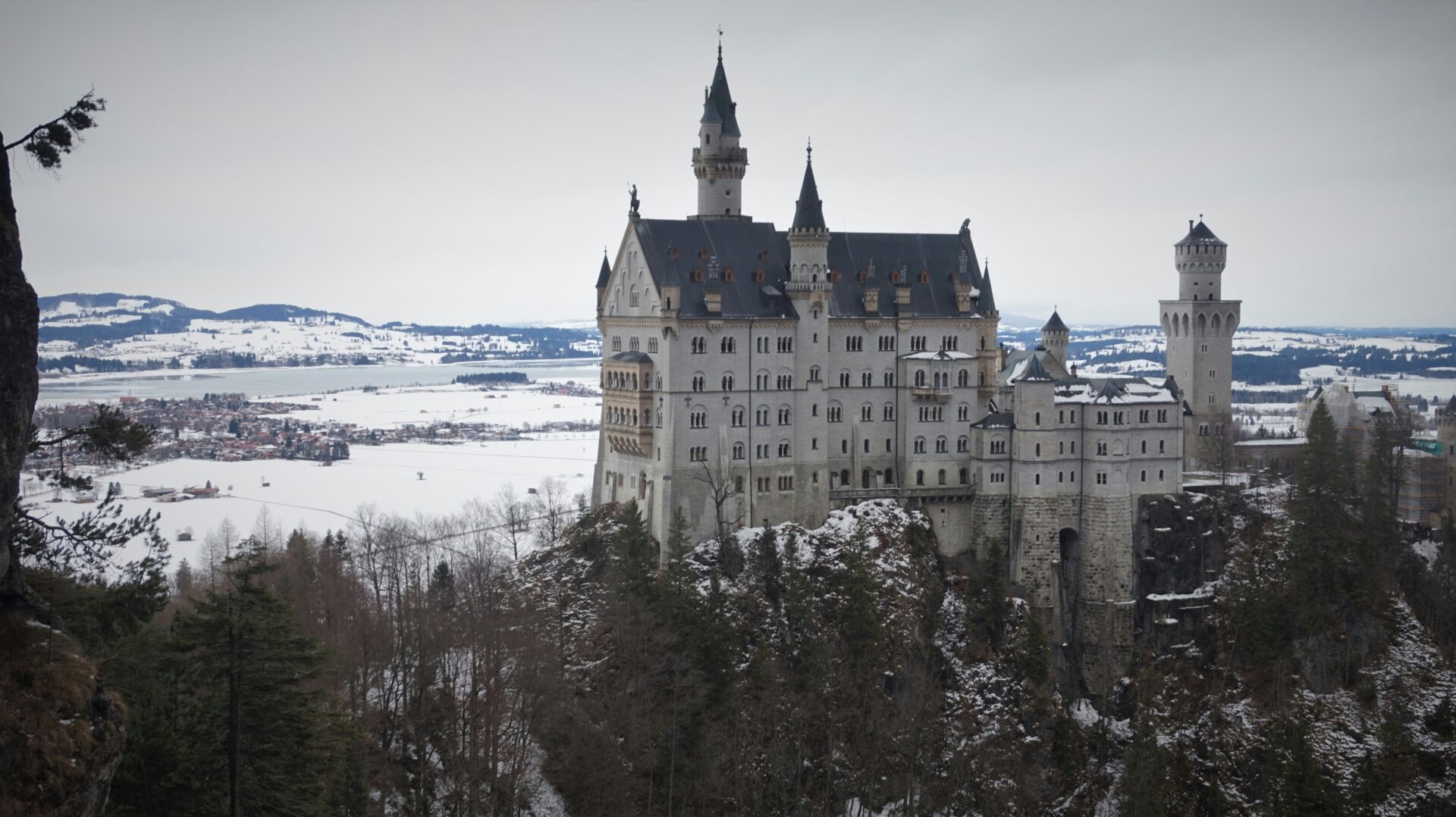
How to Avoid the Rush
I’ve learned that when you visit during the day is just as important as the season. Most tour groups roll in between 10:00 AM and 3:00 PM. If you show up right when ticket offices open, you’ll walk almost empty paths and get to the best photo spots with no trouble.
Evening light is amazing for photos, and the crowds thin out after 4:00 PM. If you’re coming from Munich or Füssen, try to leave as early as possible. Buying tickets online in advance is a total lifesaver—no waiting, way less stress.
Definitely check out Marienbrücke before the crowds swarm it. Signs help, but some paths close in winter or after heavy rain, so double-check before you go.
Bring snacks and water, especially if you’re there during busy hours. And wear comfy shoes—the hike up is no joke.
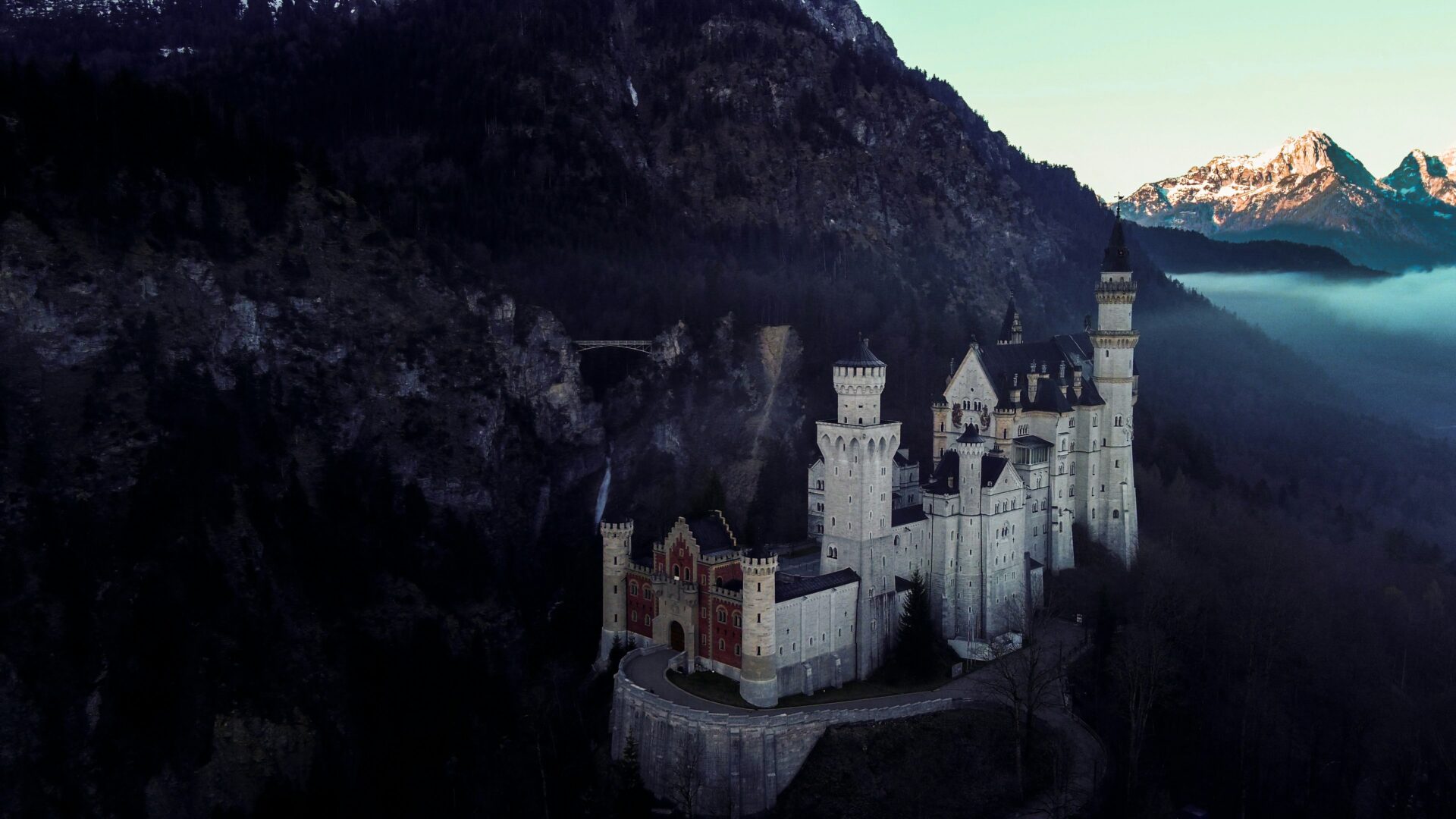
Getting There: Travel and Transportation Options
Getting to Neuschwanstein Castle is easy if you plan ahead. I’ve tried a few different ways, whether starting in Munich, using public transit, or just taking the scenic route.
Munich to Füssen and Schwangau
From Munich, I usually hop on a direct train to Füssen. It’s a chill Bavarian town just a few miles from the castle. Trains leave from Munich Hauptbahnhof several times a day, and the ride takes about two hours.
Watching the countryside change as the Alps come into view is half the fun. Once you hit Füssen, Schwangau and the castle are less than 5 km away.
If you can, catch the earliest train—especially on weekends or holidays. You’ll beat the crowds and have more daylight to wander the castle grounds.
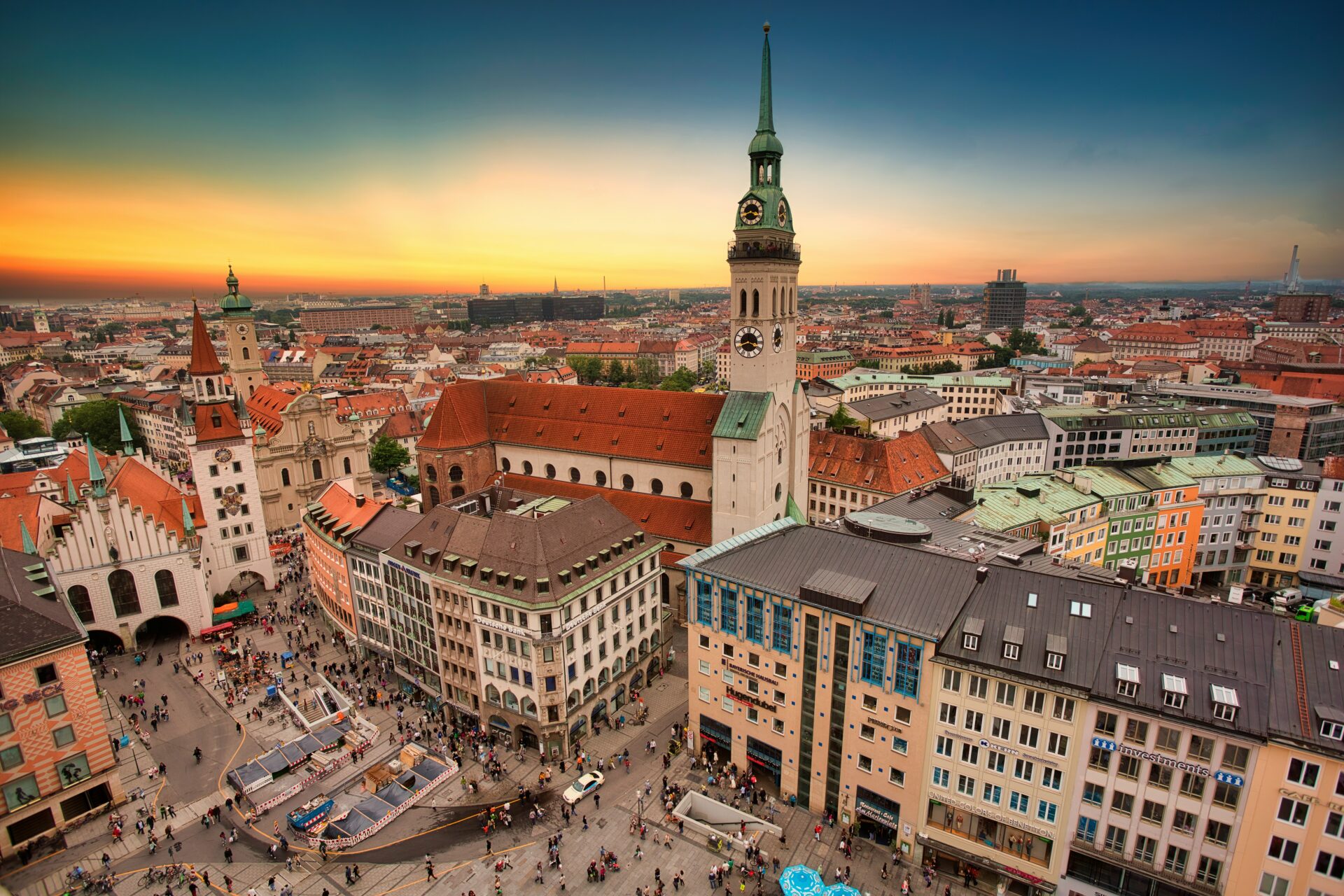
Public Transportation Tips and Bayern Ticket
If you’re watching your budget, the Bayern Ticket is a fantastic deal. It covers unlimited regional travel in Bavaria for a whole day, starting at €25. I use this ticket all the time—it’s good for trains, most buses, trams, and the subway. Perfect if you want flexibility.
You can buy the Bayern Ticket at any train station or online. Up to five people can share it for a small extra fee per person. I always check train times before my trip. Regional trains don’t run as often as express ones, so knowing the schedule saves you from long waits.
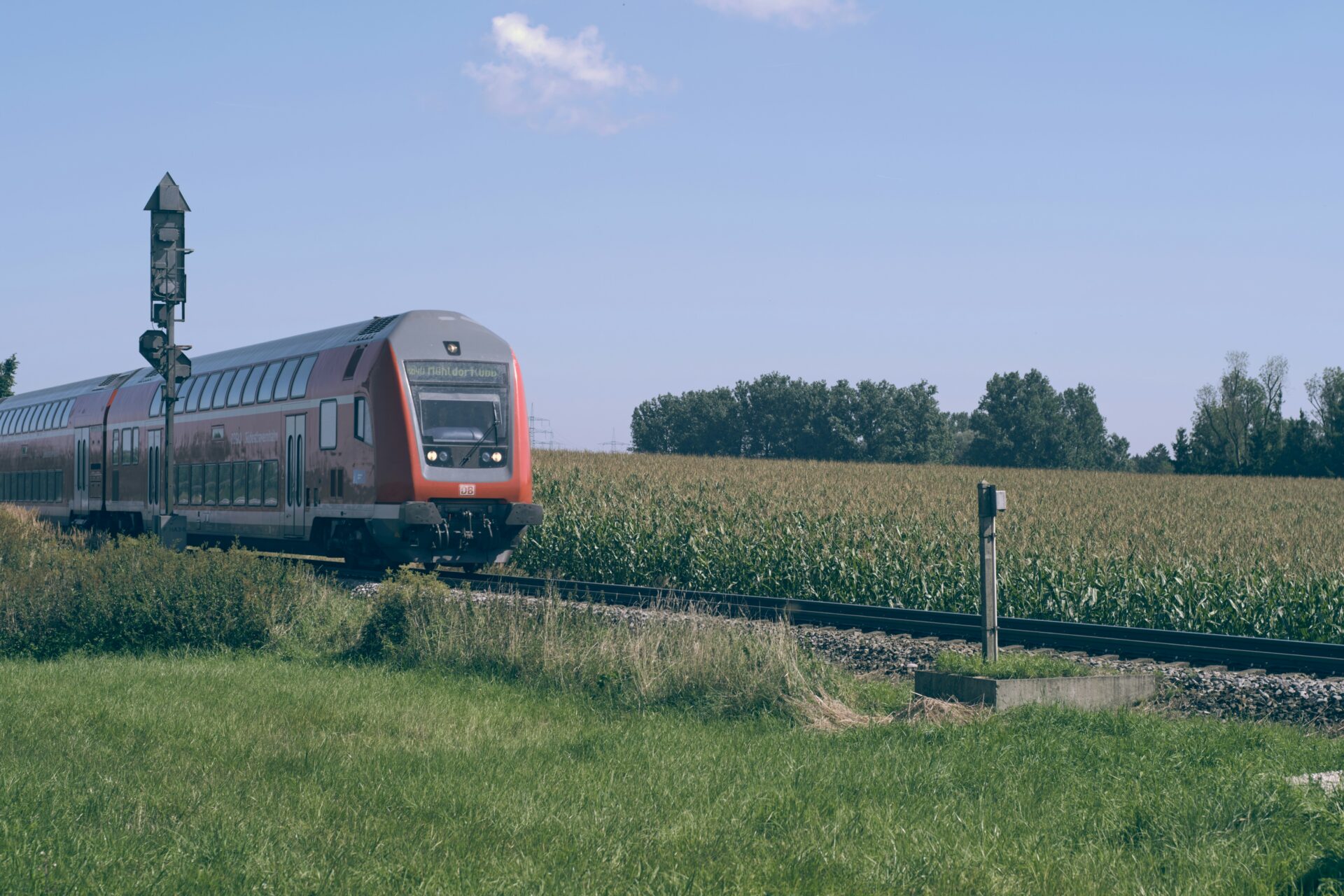
From Füssen to Hohenschwangau
Once you get to Füssen, it’s a quick jump to Hohenschwangau—the village below Neuschwanstein. I just head to the bus station outside the railway station. Buses 73 and 78 leave about every 30 minutes and take around 10 minutes to reach Hohenschwangau.
If you’ve got luggage, stash it in the lockers at Füssen station. From Hohenschwangau, it’s a short walk to the ticket center and the shuttle bus stop. You can also hike up, take a horse-drawn carriage, or catch the shuttle. Personally, I like the shuttle for the views and the quick ride.
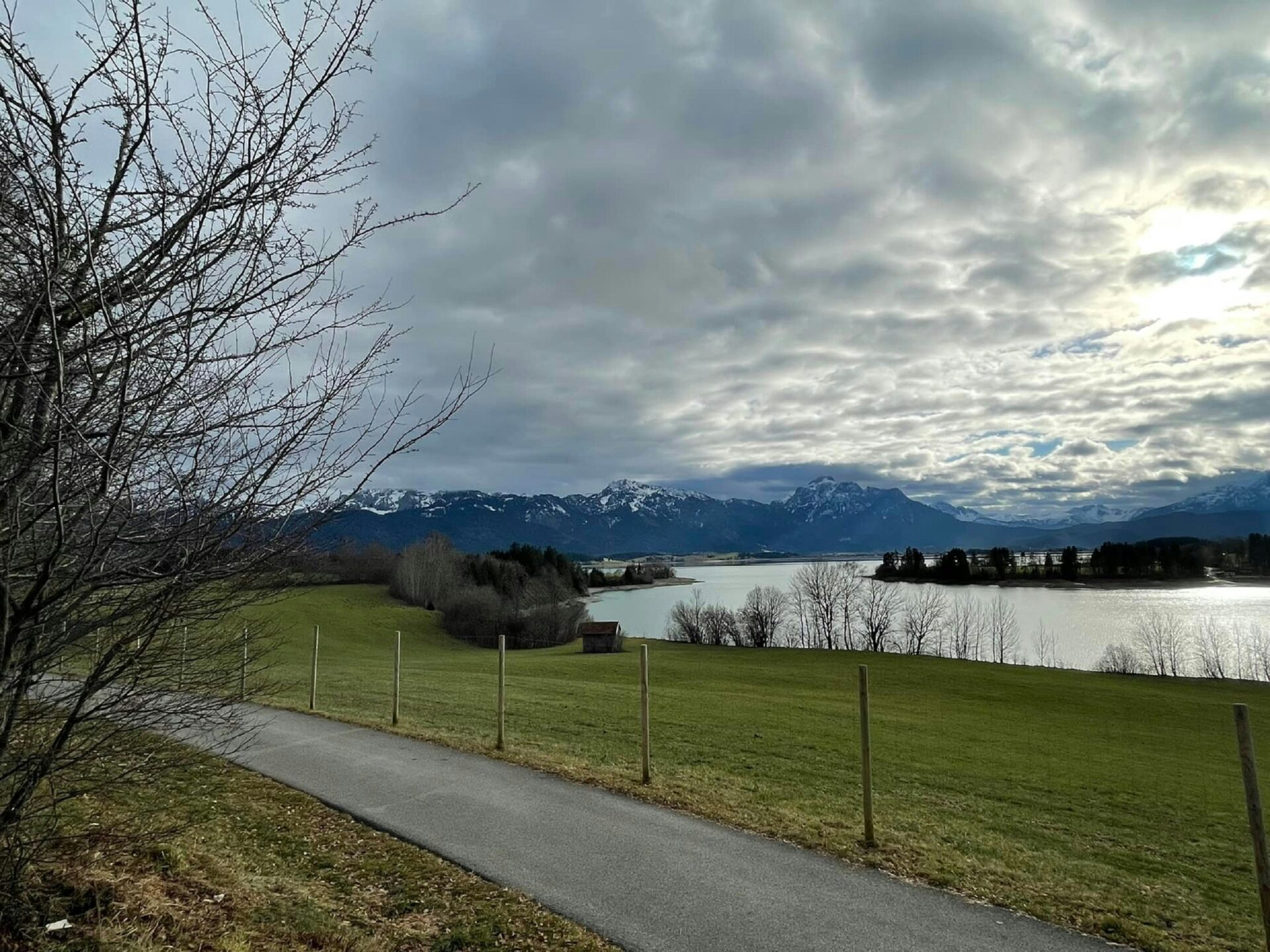
Scenic Route and Day Trips from Munich
Driving from Munich to Neuschwanstein is another solid option. The drive’s about two hours, and you pass rolling fields and lakes along the way. Rental cars are easy to find in Munich, and there’s parking in Hohenschwangau just a short walk from the castle.
Plenty of guided day trips leave from Munich, too. Some stop in towns like Oberammergau or even hop over to Innsbruck, Austria. I’ve tried driving myself and joining group tours—both have their perks. Driving solo lets you explore little villages and lakes, while tours handle all the logistics. Either way, the journey is half the fun.
Unforgettable Photo Spots and Views
Neuschwanstein Castle looks incredible from so many angles. I found some of my favorite views by wandering popular lookouts, lakeside trails, and a few hidden spots locals tipped me off to.
Mary’s Bridge (Marienbrücke) and Its Breathtaking Vistas
Mary’s Bridge, or Marienbrücke, is the most iconic place to photograph Neuschwanstein. The bridge hangs over Pöllat Gorge, with a panoramic view of the castle and the mountains behind. I always try to get here early or late in the day.
That’s when the light softens, crowds thin out, and you get the clearest shots. Standing in the middle of the bridge, you see the whole castle framed by forest and sky. It’s the classic “postcard” view.
I like to take a few photos here, then wander down the nearby hiking path for different angles with the gorge and waterfall.
Pro Tip:
- The bridge gets packed in summer. Bring a wide-angle lens or use your phone’s panorama mode to fit in more of the castle without too many people in the shot.
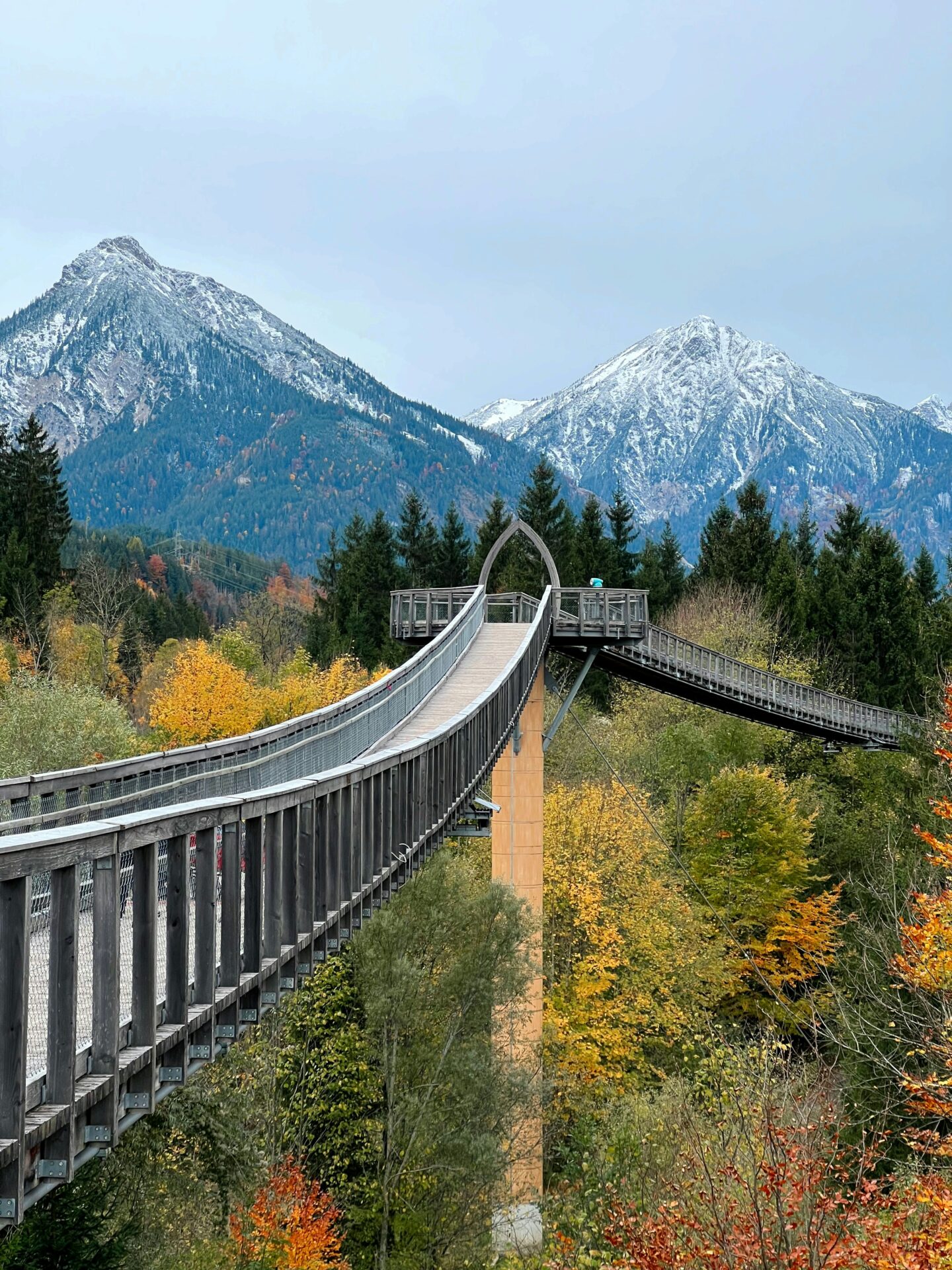
Alpsee Lake and Scenic Trails
Alpsee Lake sits just below the castle and Hohenschwangau. The trails around the lake are peaceful and offer some surprising castle views reflected in the water. I love walking these paths early in the morning, when mist hangs over the lake and everything feels quiet.
If you head to the south end of the lake, you’ll find benches where you can see both Neuschwanstein and Hohenschwangau at once. The route around Alpsee is well-marked and perfect for families or anyone wanting a break from the castle crowds. If you bring a tripod, you can catch the castle’s reflection when the water’s still.
- Recommended Route:
- Start at the main lake entrance
- Follow the shoreline path clockwise
- Pause near the small docks for water-level photos
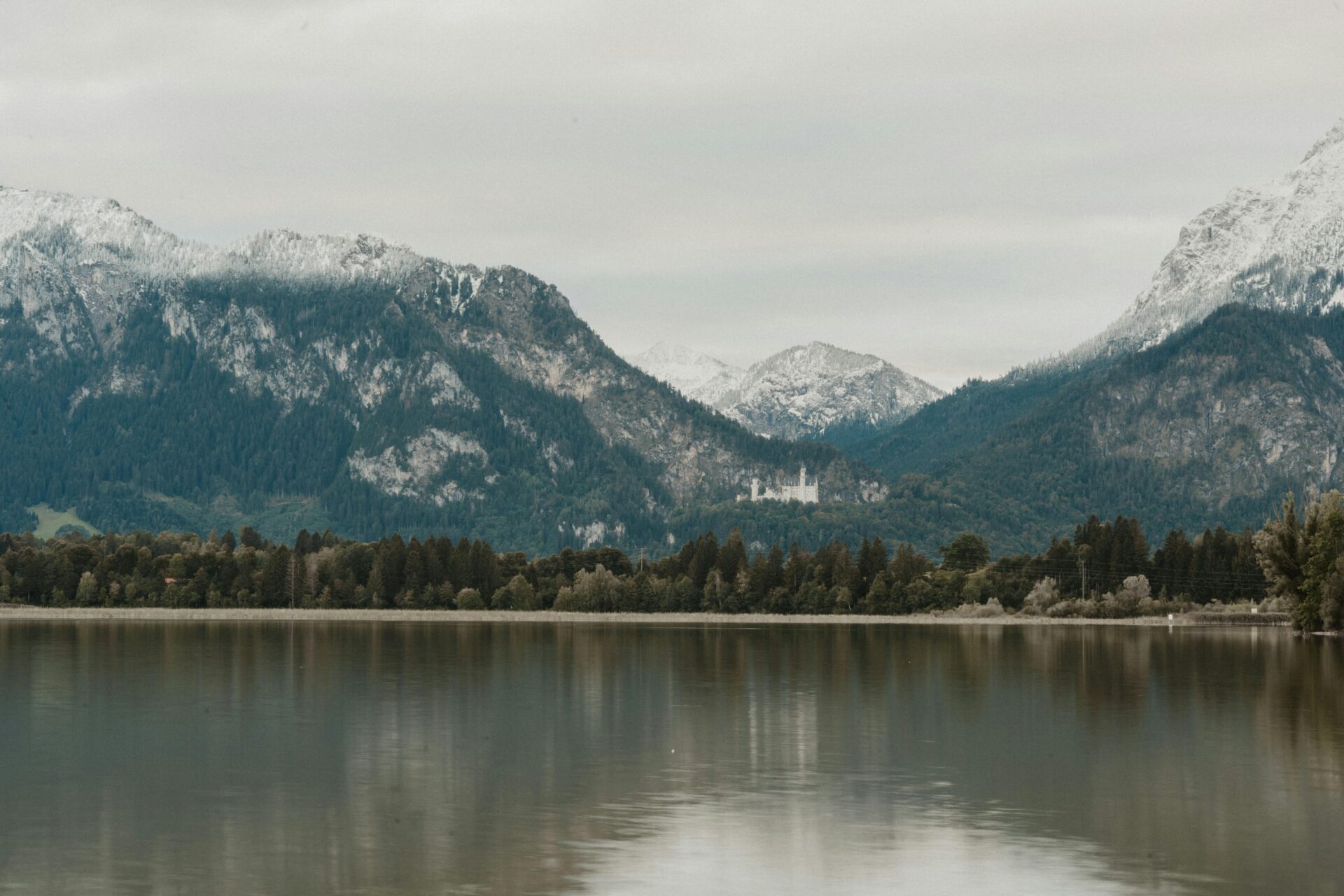
Hidden Gems for Unique Photographs
I’m always looking for photo spots you won’t find on every postcard. If you follow the hiking trail past Marienbrücke, there’s a quiet lookout a bit uphill and away from the crowds. Here, tall pines frame the view, and your shots feel more secluded.
Some of my favorite candid photos come from stopping along the winding path just before the castle entrance. These side angles have fewer people and really show off the castle’s scale against the landscape. Locals sometimes mention a small clearing north of the ticket center—it’s less crowded and gives a unique view over Alpsee toward the castle.
If you want something special, visit in late afternoon for golden hour. The castle practically glows, and the forest shadows add drama. A zoom lens helps you play with these perspectives and pick out cool details.

Making the Most of Your Visit: Practical Insights and Local Delights
Visiting Neuschwanstein Castle isn’t just about the famous exterior or those lavish rooms. The right tour, a memorable hotel, and a taste of local treats can turn your visit into something unforgettable.
I’m sharing what I found most useful—and honestly, what made my trip near the castle so much better.
Audio Guides and Guided Tours
You can only see inside Neuschwanstein Castle if you join a guided tour. I’d really suggest booking your ticket early—these tours fill up fast, especially once summer hits.
English-language tours happen often, though they still sell out days in advance. The guides keep things lively and the tour lasts about 30 minutes.
If you’d rather wander at your own pace, grab an audio guide. The audio guide describes each room and throws in some extra stories and details. They’ll hand you headphones, but honestly, I like bringing my own because they’re just more comfortable.
I love being able to linger in whatever room catches my eye when I use the audio guide.
Traveling with kids or someone who prefers visuals? Ask for the multimedia guide. It’s easy to follow and comes in several languages, so everyone can keep up.
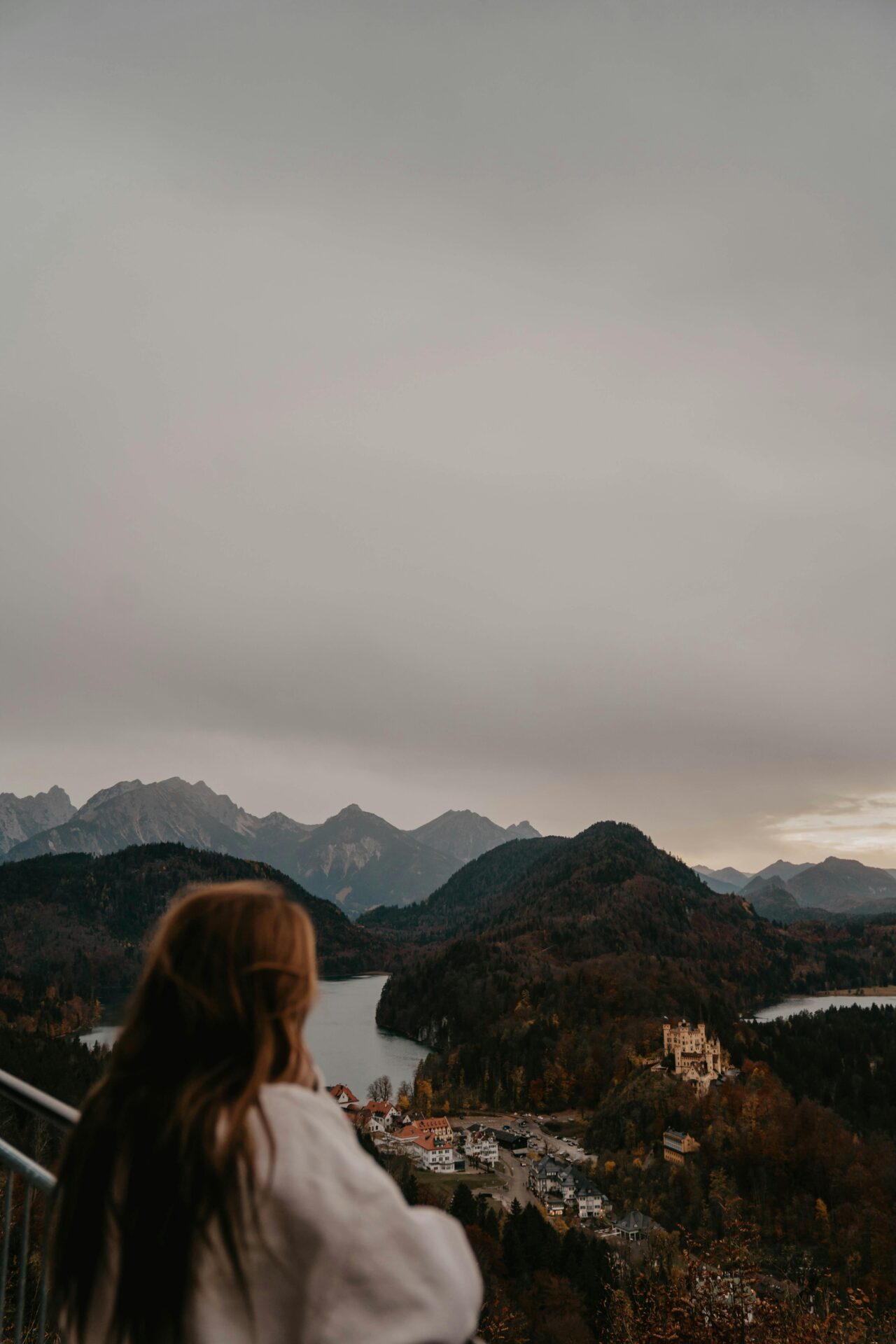
Where to Stay and Eat Near Neuschwanstein
Staying overnight nearby just makes the whole trip less rushed. I usually pick Füssen, a lovely little town only a few minutes away.
Füssen offers everything from hotels to cozy B&Bs and hostels. Some people stay in Hohenschwangau since it’s even closer—you can literally walk to the ticket center from there.
If you’re after something extra special, check out hotels with castle views. Many serve breakfast buffets loaded with local cheeses and fresh bread.
For dinner, I’d say try Bavarian schnitzel or käsespätzle at spots like Hotel Müller or Alpenstuben. In winter, nothing beats warming up with mulled wine at a snug café.
Here’s a quick breakdown:
| Town | Distance to Castle | Accommodation Types | Dining Picks |
|---|---|---|---|
| Füssen | 5 min by car | Hotels, B&Bs, Hostels | Gaststätte Krone, Rote Villa |
| Hohenschwangau | Walkable | Hotels, Guesthouses | Hotel Müller, Alpenstuben |
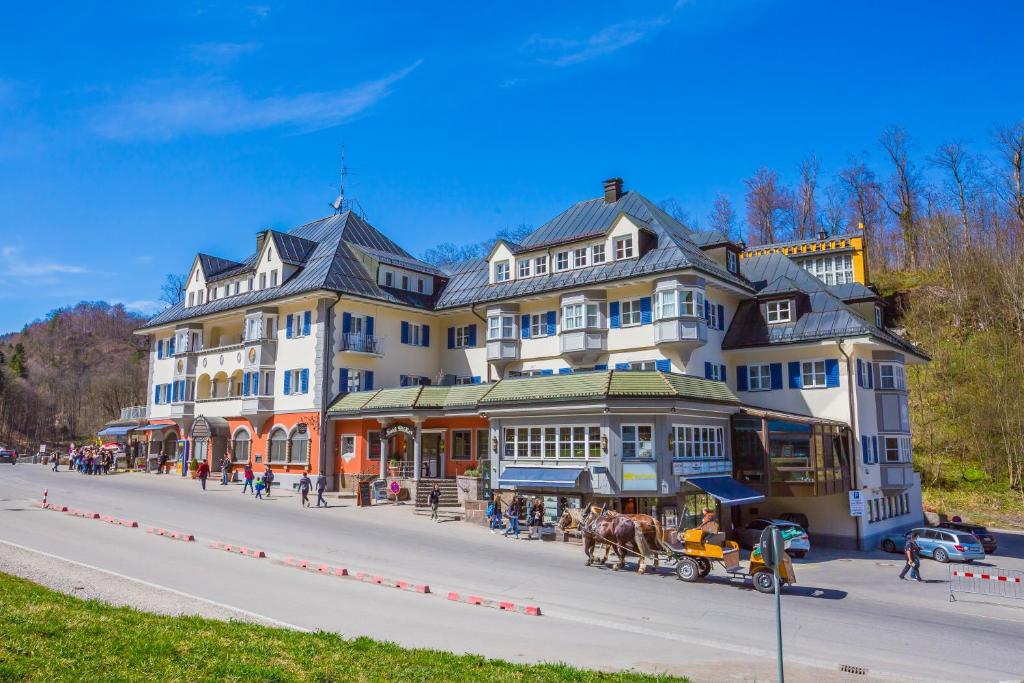
Souvenirs and Local Experiences
Right by the ticket center, you’ll find a handful of shops selling Neuschwanstein postcards, snow globes, and Christmas ornaments. I always end up buying handmade crafts from local artists—my favorite is this little carved wooden castle.
If you want to escape the crowds for a bit, take a stroll along the walking paths that lead to Alpsee Lake. You can rent a rowboat or just sit by the water and breathe a little.
In winter, small stands pop up selling spiced mulled wine, roasted nuts, and gingerbread. Show up during a festival and you might catch horse-drawn carriages and live Bavarian music.
Don’t leave without tasting something from the local bakery. I always grab an apple strudel before heading out. Little treats like that turn a castle visit into a real Bavarian adventure.

The Fascinating History and Legacy of Neuschwanstein
Neuschwanstein Castle rises above Bavarian forests, mixing royal dreams with fairytale charm. Its story isn’t just about towers and battlements, but also a reclusive king’s wild ambitions, timeless inspiration for artists, and a deep sense of Bavarian identity.
King Ludwig II and the Castle’s Origins
When I first read about Neuschwanstein, King Ludwig II’s story totally grabbed me. He became king of Bavaria in 1864, just 18 years old.
Ludwig was shy, a bit of a dreamer, and obsessed with myths, opera, and medieval legends. He wanted to build a castle straight out of these stories.
Construction started in 1869. Ludwig poured much of his fortune into Neuschwanstein, not to build a fortress for war, but a retreat where legends felt real.
He obsessed over every detail, drawing ideas from Richard Wagner’s operas. Ludwig admired Wagner deeply.
Sadly, Ludwig never saw his dream finished. He died in 1886 under mysterious circumstances, just weeks after being declared insane.
Only about a third of the interior was finished, but you can still feel his vision in every room and tower.

Neuschwanstein’s Influence on Fairytale and Disney Castles
The first time I glimpsed Neuschwanstein’s turrets through the mist, I thought, “This has to be a fairytale castle.” Apparently, Walt Disney felt the same—he visited before designing Sleeping Beauty’s Castle at Disneyland.
Neuschwanstein’s white limestone and blue rooftops set the standard for storybook castles everywhere.
You’ll spot it in movies, on postcards, and even inside video games. Its design pops up as a symbol of fantasy and magic, from Disney parks to children’s books.
Locals say this connection brings in not just history fans, but also animation and pop culture lovers.
For photographers and dreamers, Neuschwanstein is the ultimate fairytale castle. The mix of Romanesque and Gothic styles, and that dramatic mountain backdrop, keep inspiring artists and travelers—myself included.

Neuschwanstein in Bavarian Culture
In Bavaria, Neuschwanstein isn’t just a tourist attraction—it’s a proud part of the region’s identity.
A lot of Bavarians see Ludwig II as both a tragic and beloved figure. They even call him the “Fairytale King.”
Seasonal festivals, souvenirs, and bakery treats in Schwangau often show off the castle or the king’s face.
When I visit Neuschwanstein, I get a real sense of local traditions. The castle sets the stage for parades, folk dances, and music that celebrate Bavarian culture.
School groups, families, and all sorts of visitors fill up the nearby villages. That creates a lively scene almost any time of year.
Neuschwanstein reminds people of Bavaria’s royal past. You can really feel how the castle shapes local pride and daily celebrations.

